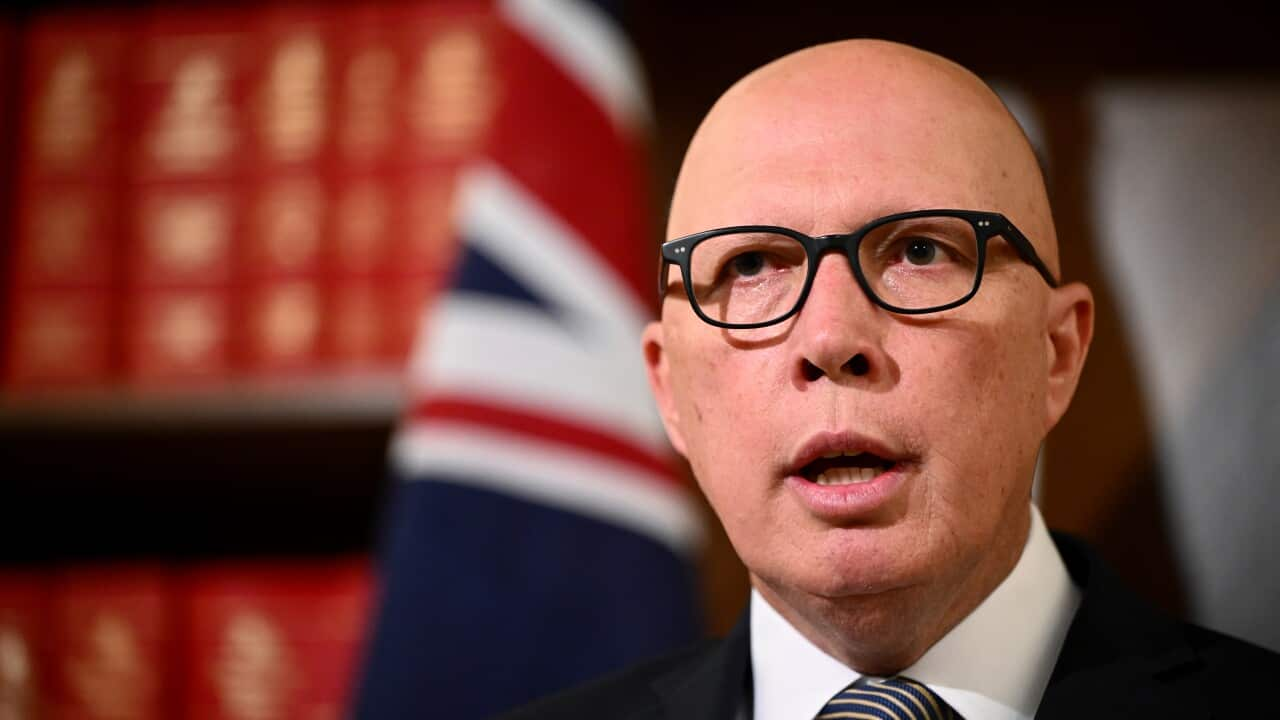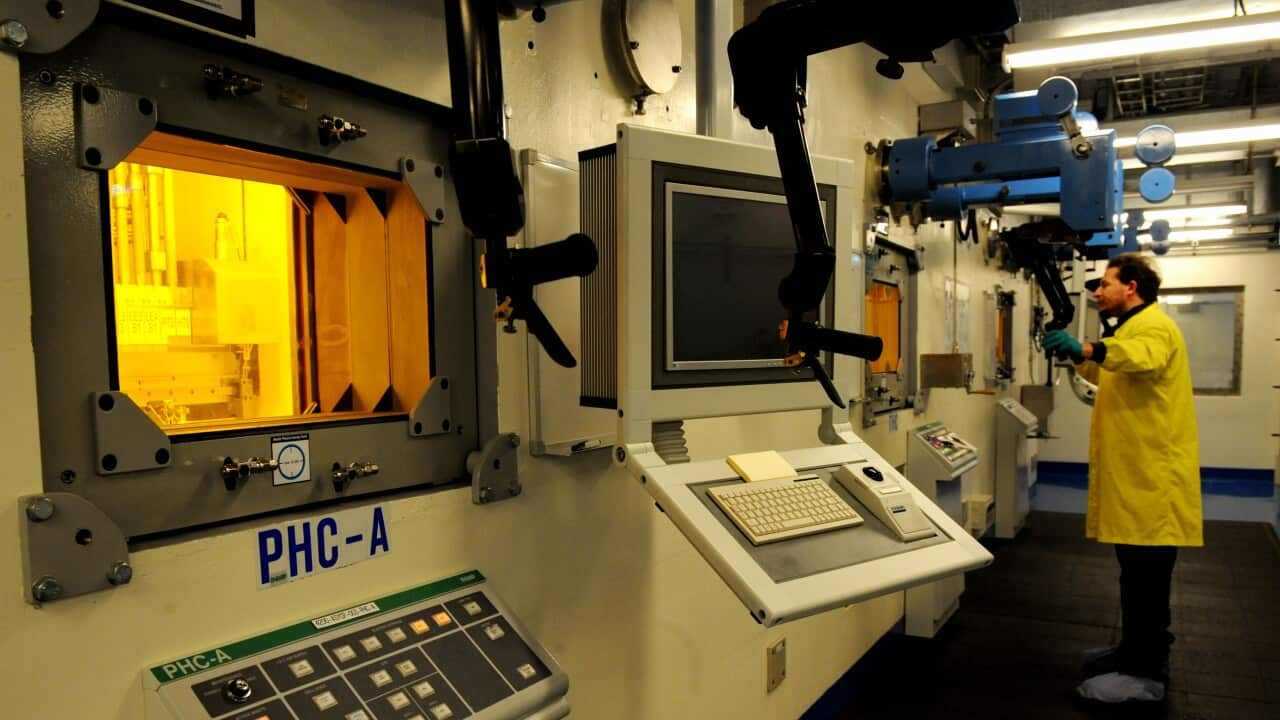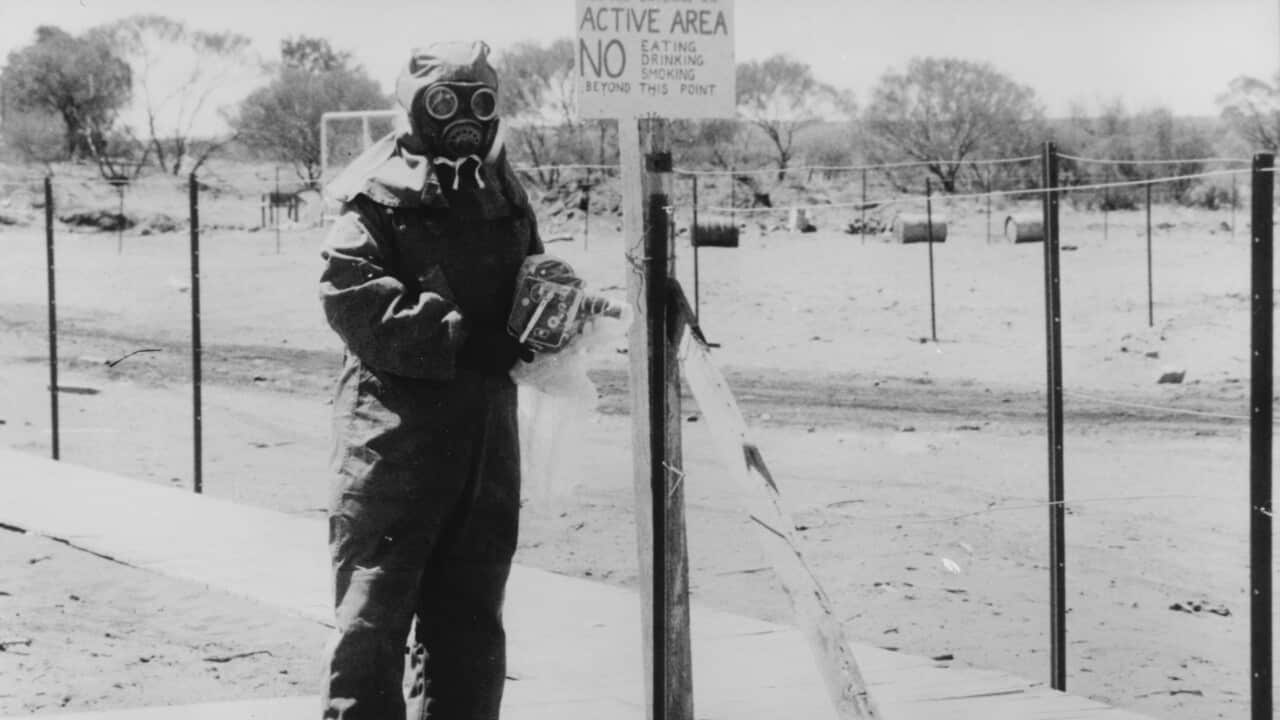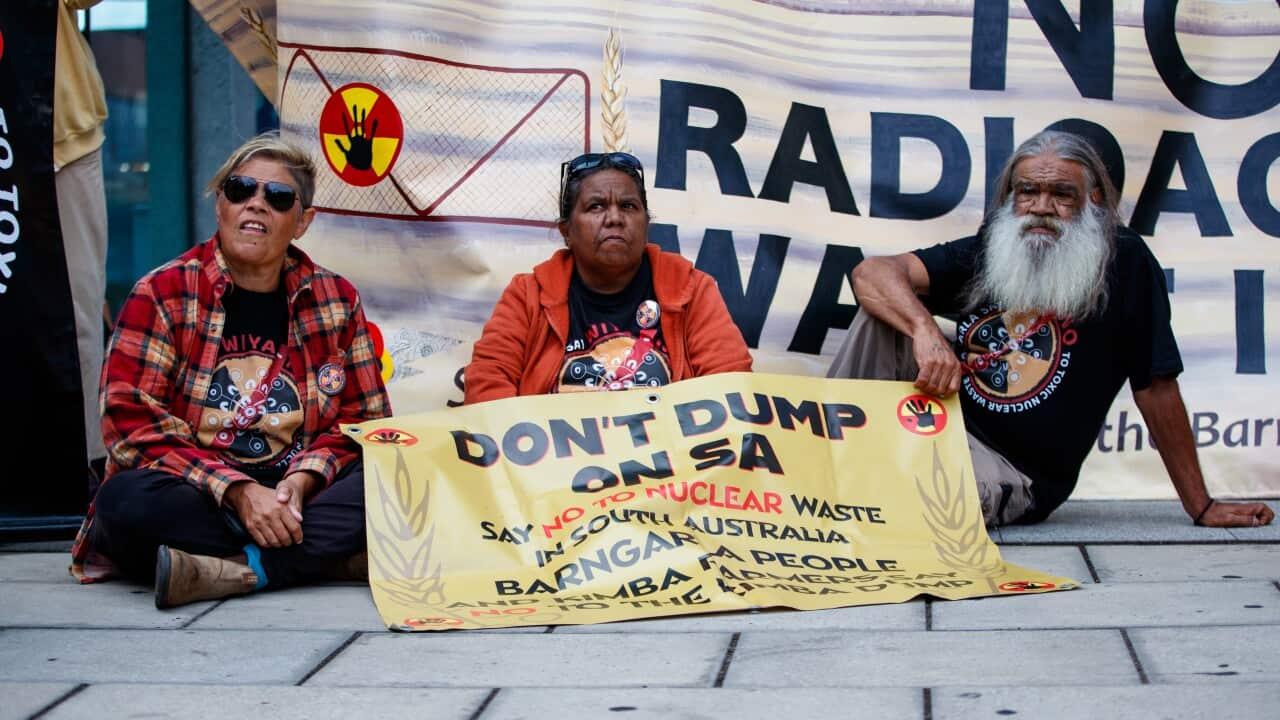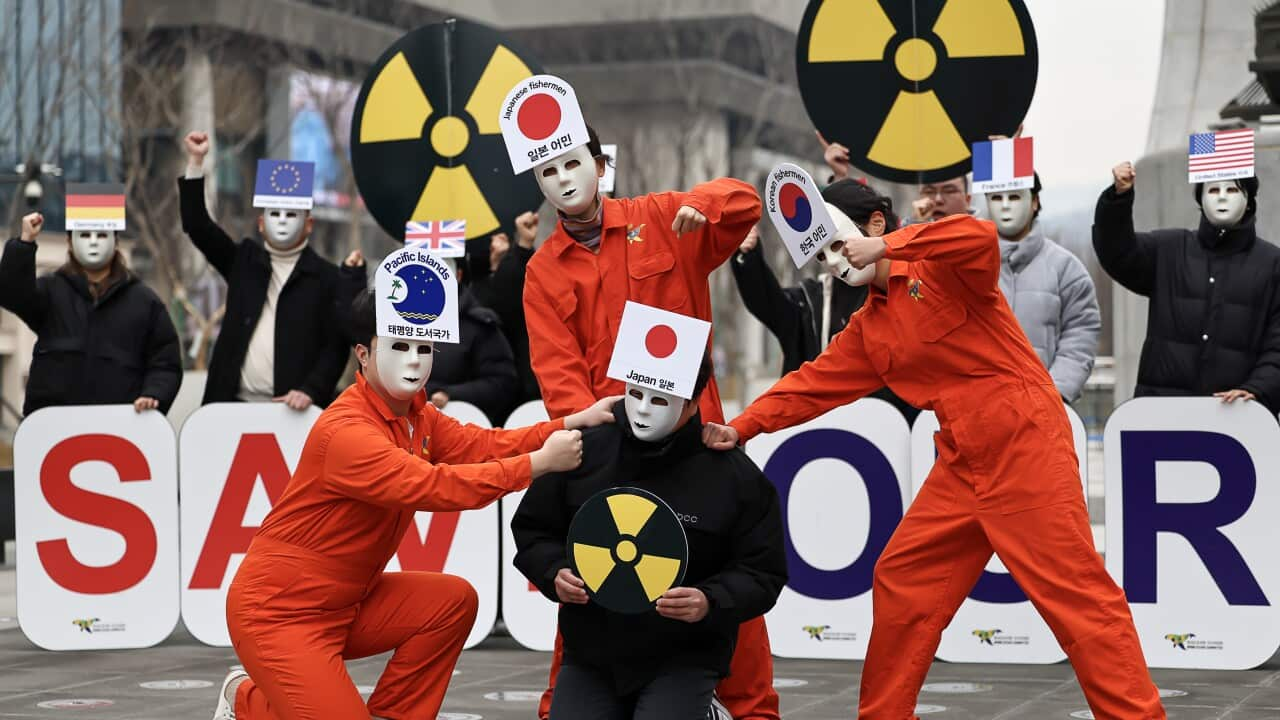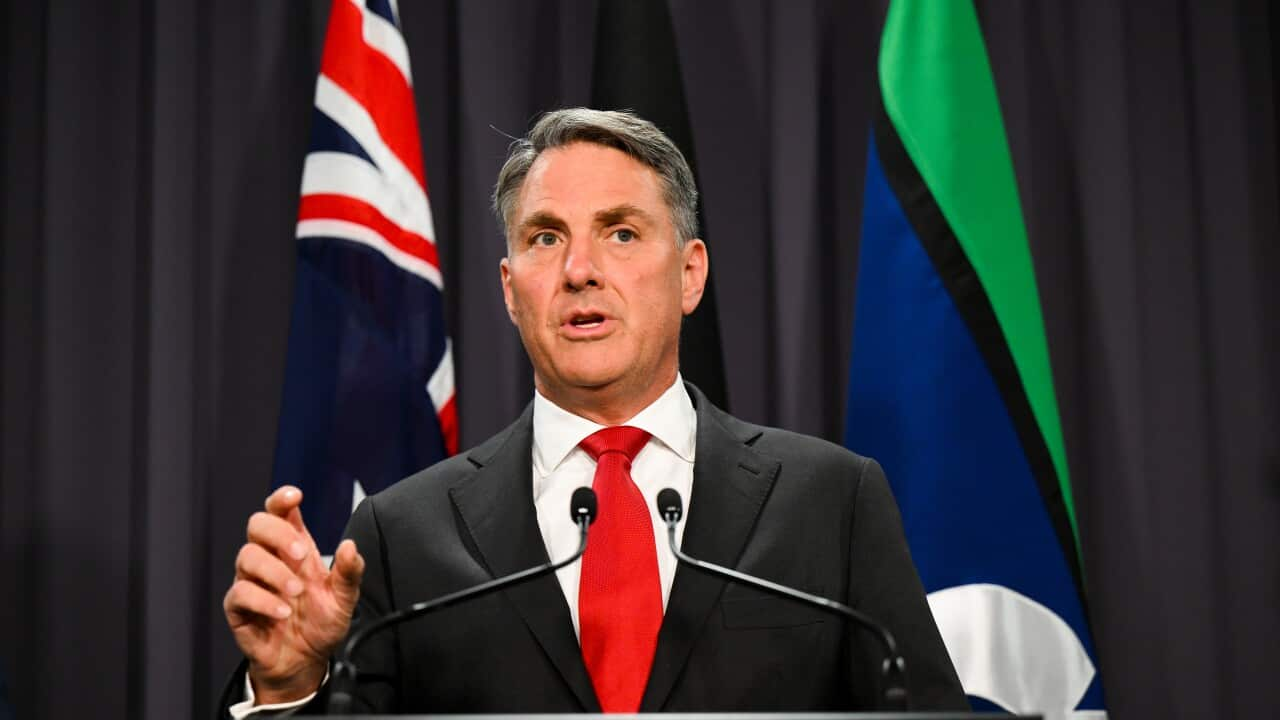Earlier this week, Opposition leader Peter Dutton announced plans to build seven nuclear power reactors in Australia if the Coalition wins the next federal election.
The announcement was . Experts say serious questions about how the highly toxic output from the reactors would be stored, and where, need to be discussed.
While Australia stores the nuclear waste we already produce through research and medicine – low-risk items like gloves, plastic and paper that contain a small amount of radioactivity, there's no long-term solution for actually disposing of it.
Dutton flagged the Coalition's plans for nuclear waste earlier this week.
"It's stored onsite under our proposal and then at the end of the life of that asset, it's moved to a permanent home," he said.
"And our argument is that should be where the government decides for the waste from the submarines to be stored," he added, referring to the nuclear submarines planned as part of the .
A site is yet to be chosen for the submarines' nuclear waste, though Defence Minister Richard Marles confirmed last year that when the time comes – in the 2050s – Australia will dispose of the high-level nuclear waste domestically.
According to the World Nuclear Association, that permanent home would need to be hundreds or even thousands of metres underground, buried in what is called 'deep geological disposal'.
Nowhere in the world has a permanent disposal facility in operation. Finland is expected to open the first, Onkalo, this year.

The Opposition's nuclear plan includes sites in Queensland, Victoria, NSW, South Australia and WA. Source: SBS News
What nuclear waste does Australia produce and where does it go?
Compared to the rest of the world, Australia produces a relatively small amount of radioactive waste, mainly through research, medicine and industries like agriculture and technology.
Australia's only nuclear reactor, at Lucas Heights in Sydney, is used for medical and research purposes rather than energy production.
"For a small reactor, you can have temporary storage in what's basically a very large shed, and you can get away with that," says Ian Lowe, emeritus professor in environment and science at Griffith University.
"But if we were to build seven power reactors and produce a hundred times as much waste, then managing the waste would be a serious undertaking."
Almost all the waste produced at Lucas Heights is low-level and is stored onsite, along with a small amount of intermediate-level waste, managed by Australia's Nuclear Science and Technology Organisation (ANSTO), which operates the reactor.
But ANSTO only stores about 45 per cent of the country's low-level nuclear waste.
The rest — 55 per cent — is housed at various facilities across the country, including universities, hospitals, mines and industrial sites.
Lowe says the wide dispersal of nuclear waste shows Australia is "not dealing with it. It's just being accumulated."
While temporary onsite storage is allowed by the Australian Radioactive Waste Management Framework, it's not a long-term solution.
"Australia really needs to have that mature conversation about where to house this waste," says Tony Hooker, director of the Centre for Radiation Research, Education and Innovation at the University of Adelaide.
"We need a national facility just to look after the radioactive material that we have now."
Why don't we have a long-term facility?
Governments and experts agree that a long-term waste management facility is required, but so far it's been impossible to progress.
Australia has plans for a national radioactive waste management facility to dispose of low-level waste and temporarily store intermediate-level waste.
That proposal doesn't mention high-level waste — the kind that would be produced by Dutton's nuclear reactors or the AUKUS submarines committed to by both Labor and the Opposition.
Steps towards constructing a low-level waste dump have been repeatedly blocked — twice in South Australia and once in the Northern Territory.
The "fundamental problem", according to Lowe, is that while "most people agree that the radioactive waste would be safer if stored in a properly engineered site", it hasn't been possible to persuade any community to host it.
Last year, the federal government scrapped $100 million plans to build the waste dump near Kimba, in South Australia, after Barngarla Traditional Owners successfully challenged the decision in the Federal Court.
Community members argued they hadn't been properly consulted over the site, chosen by former prime minister Scott Morrison in 2021.
After the Kimba decision, Federal Resources Minister Madeleine King reaffirmed the government's commitment to constructing a facility for low-level and intermediate-level waste.
But she said it would first ensure the site was accepted by "the whole community".
Lowe points out that any site will require consultation with Traditional Owners — and many have serious concerns.
"Indigenous people in South Australia have never forgotten the impact on their predecessors of the Emu Field and Maralinga [nuclear] tests, and they're very resistant to the idea of radioactive material being stored on their land."
Social acceptance and education
Hooker agrees a location for the proposed waste facility would require broad social acceptance.
"The only way we're going to get social acceptance is if we provide accurate, scientific, valid information that can be easily digested by members of the public."
Hooker is concerned nuclear disasters at Chernobyl and Fukushima — along with stories children absorb about "superheroes mutated by radiation" – have skewed the public's understanding of radiation risk from nuclear waste.
"People need to realise that we're exposed to radiation all the time. We are radioactive. What we eat and drink is radioactive. Our houses are radioactive. So it's about putting the radiation dose into perspective."
He wants Australians to understand that high-level radioactive waste is already being stored around the world according to international regulatory requirements.
"To date, there has been no release from high-level radioactive waste storage."
A 'brave' commitment to house AUKUS waste
The question of how and where to store high-level waste in Australia looms large — even without the Opposition's proposed seven nuclear reactors.
Lowe believes legal obstacles and other issues make that proposal "totally impossible".
Either way, Australia has made a bipartisan commitment to the AUKUS nuclear submarine deal.
The chosen submarine model uses sealed reactors, meaning highly-enriched uranium is contained for thirty years before the reactor needs to be refuelled.
In 2023, Marles said the high-level waste would be disposed of in purpose-built facilities, "remote from populations" and on defence land, "current or future".
Lowe says it's a "brave" commitment given that the United States and the United Kingdom, which have been operating nuclear submarines for more than 50 years, "haven't yet worked out how to deal with it".
"In both those cases, the used reactors from decommissioned submarines are just sitting in a shed or by a wharf."

